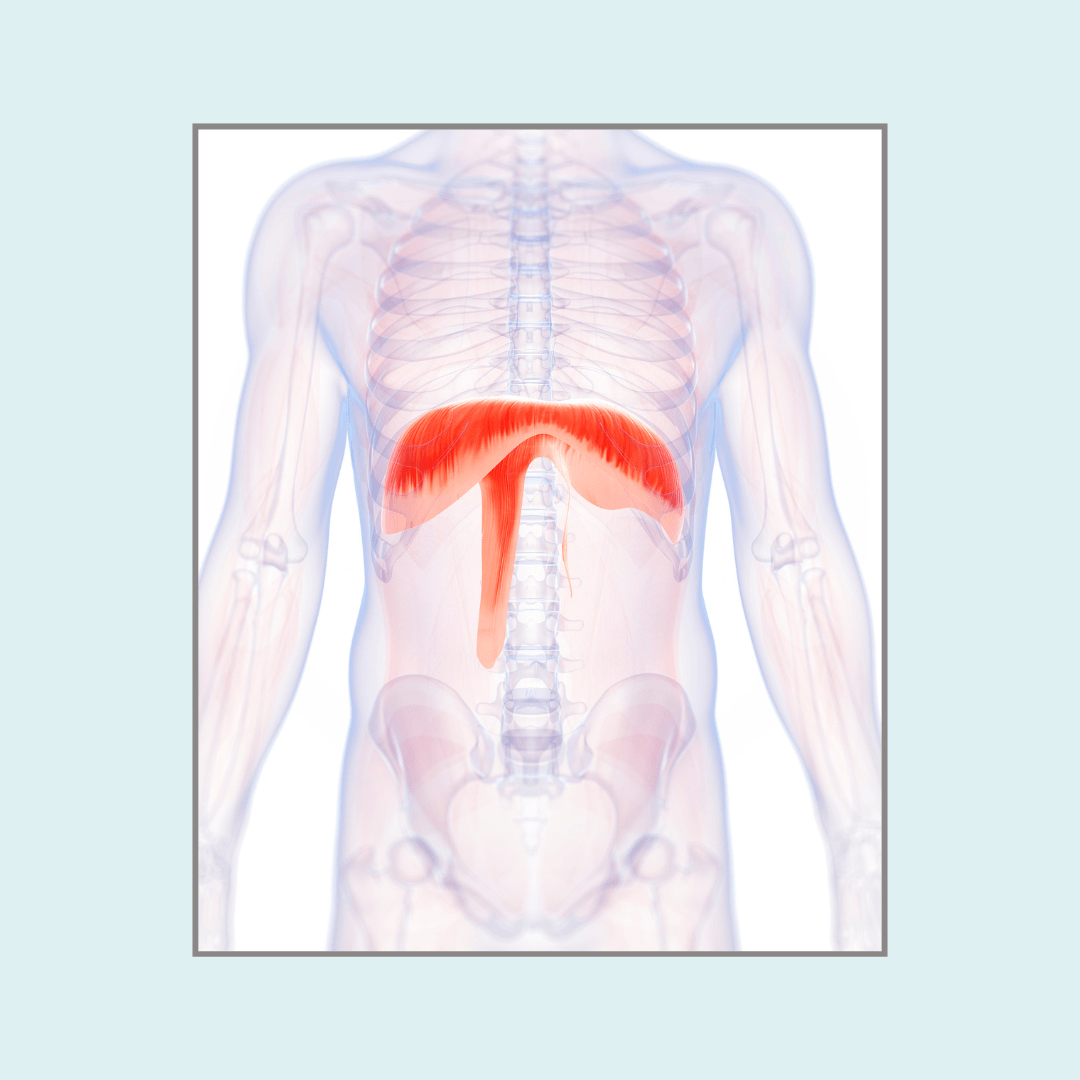What is it, and Where?
The Diaphragm is a quite big, but thin muscle running from the sternum, internal wall of ribcage (ribs VII- XII) to lumbar spine on level L1-L3. Shaped like an open umbrella it separates the lungs and digestive system, so actually it is like splitting a trunk in half. The diaphragm acts like a tunnel for a few important structures:
- The esophagus and vagus nerve, which controls much of the digestive system.
- The aorta, the body’s main artery that transports blood from the heart.
- The thoracic duct, a main vessel of the lymphatic system.
- The inferior vena cava, a large vein that transports blood to the heart.
What is worth mentioning is that the nerve supply of the diaphragm is coming from the level C3-C5 nervous system, and I will explain the importance of this fact later on.
What does it do?
The main and the most important function of the diaphragm is respiration. The diaphragm is also responsible for increasing intra-abdominal pressure to help the body keep the right posture, getting rid of vomit, urine, and faeces, and preventing acid reflux.
What can make the diaphragm restricted in its function?
There are a range of health conditions affecting or involving the diaphragm, but here are the main reasons that we see restricted function in our clinic:
- stress
- spending many hours in sitting position
- lack of regular fitness activity.
How does restricted diaphragm affect the body?
As we can see above, the diaphragm is quite important and interacts with many other structures. Here are some examples of how diaphragm can affect our body:
- Neck pain: spending most of the day in a sitting position affects our posture and way of breathing. Because the diaphragm is ‘’squashed’’ our neck muscles start to work harder to help ribs moving up and down while breathing. If done repeatedly we can create a muscle imbalance between diaphragm and neck muscles, where the diaphragm does not work to its full capacity and the neck muscles do more work then they are supposed to.
- Pain between shoulder blades: usually occurs after intense activities. As we already know, the diaphragm is attached to your ribs so affects their freedom of movement while breathing. When we go for a run our diaphragm is ‘’locked’’ which makes our ribs unable to move in full range of motion. Also, the diaphragm itself is asked to perform with much more effort than it is used to.
- Shoulder pain: as we already know, tension of the diaphragm affects the position and movements of our ribs, and movement of our ribs affect the movement of our shoulder blades. Shoulder blades are a direct connection between the arm and trunk by something called a ‘floating joint’, which is nothing else than shoulder blade grinding on ribs. If the ribs are not able to move freely and their neutral position is changed, that will automatically affect the shoulder blades in their freedom of movement. Now, we need our shoulder blades to move freely as they provide freedom of movement to our arms! You can imagine that incorrect tension of the diaphragm requires our body to change muscle tension around shoulder blades and then arms. All that cascade of changes creates compensations in our body.
There is one more reason why diaphragm can cause pain around the shoulder. Nervous system! As I mentioned right in the beginning, the diaphragm has its nerve supply from levels C3-C5. Although our brain is amazing in many ways, it is unfortunately not amazing enough to specifically locate the source of pain if there was no obvious trauma or injury to the area of our body. So that means that any muscle that shares a similar nerve supply may be accused by the brain as a source of the issue and that is where we can start to feel pain. - Lower back pain: here things are not as complicated as with referred pain in shoulders. An improperly working diaphragm fails in regulating intra-abdominal pressure, which is a part of spine stabilization during activities. Also, as I mentioned in the beginning of this text, the diaphragm is attached to the lumbar spine, sharing connective tissue with some of the lower back muscles, like quadratus lumborum and psoas. Here we go again – incorrect diaphragm tension -> changed movements around segments of lumbar spine -> compensation from other muscles -> repeating incorrect movement pattern -> pain.
So now when you come to see us here at Oakfield with shoulder, neck, or lower back pain, don’t be surprised if we check your diaphragm!


